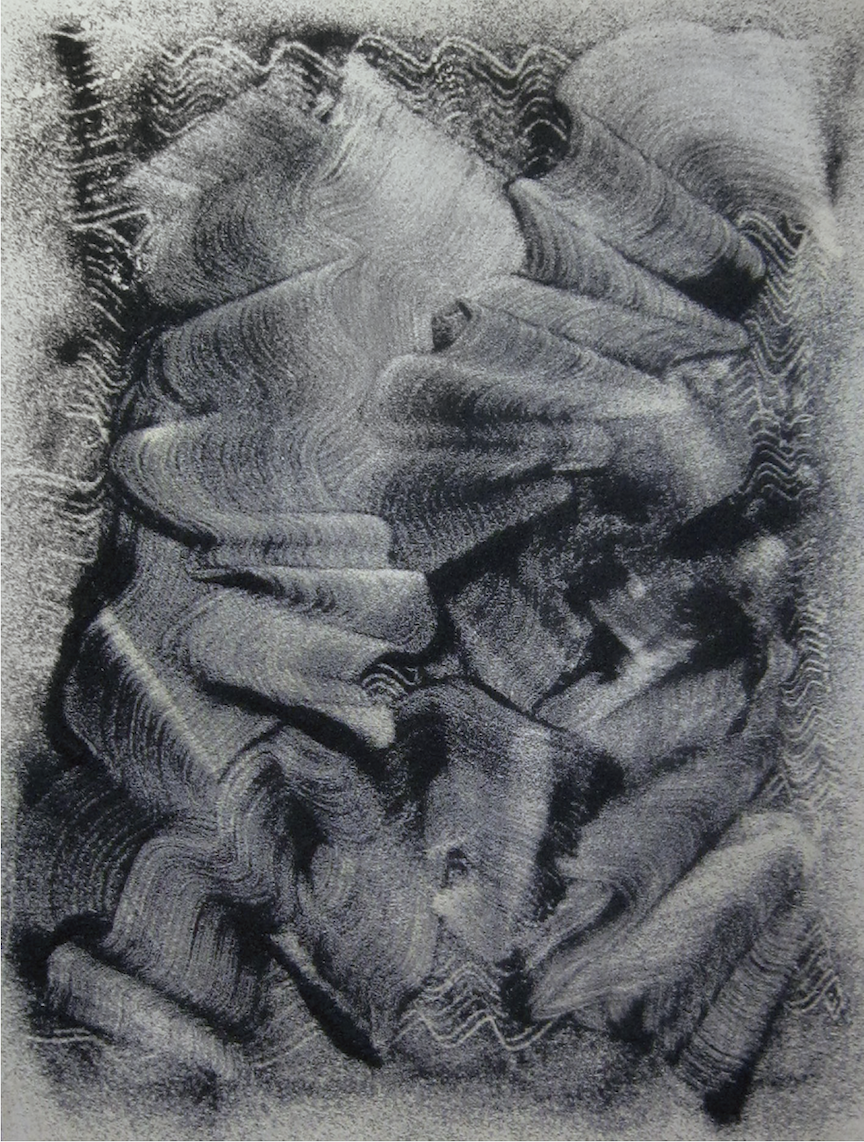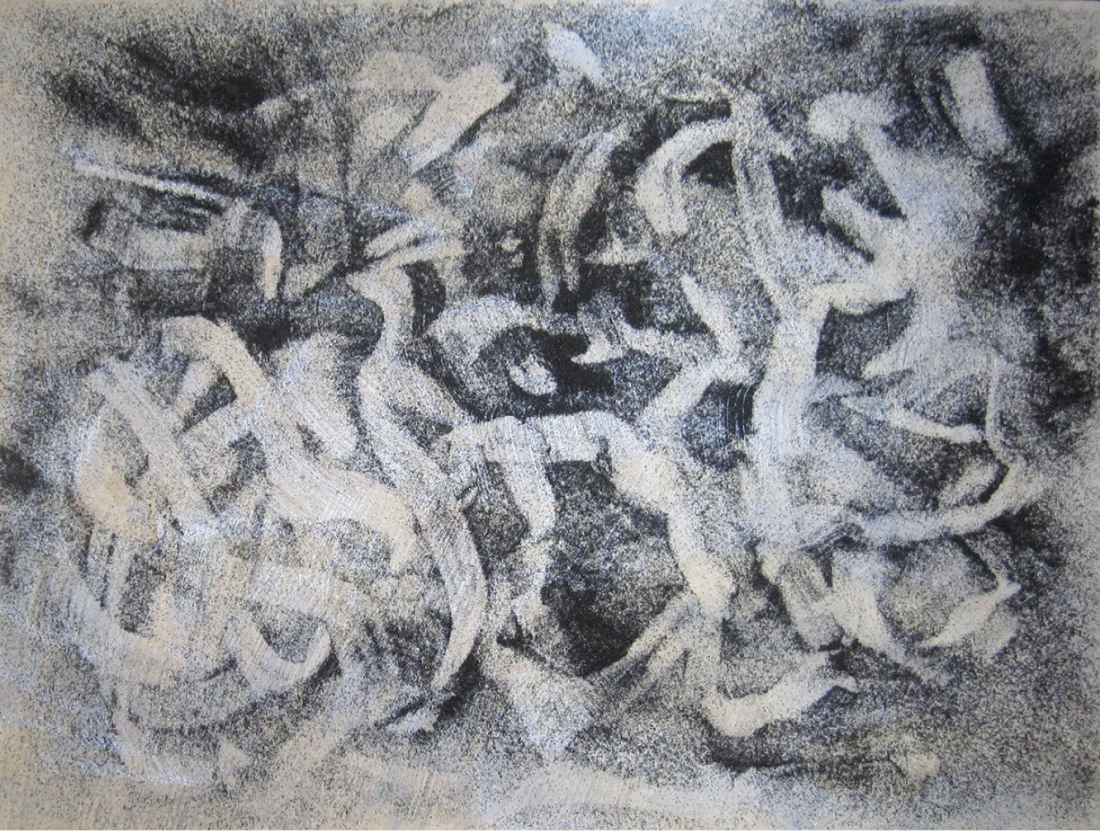Robert Scott
An encounter with this exhibition of new work by Robert Scott is an experience that is simultaneously alien yet somehow endearingly familiar. The author of the entertaining and informative catalogue essay, Gordan Novak, offers effusive praise, extravagantly claiming that the artist is “…on a mission to single-handedly rescue painting from extinction.” Simply, I was caught off guard; I needed time to adjust to its aesthetic ambitions.
Scott has been a respected contributor to modernist formalist abstraction since the early 1970s. Many of his works have been acquired for significant public, corporate and private collections, lauded in published histories and in numerous museum exhibitions. Thereby, I thought I could anticipate the tenor and direction of subsequent works by the artist. This presentation of 10 large paintings does not align with initial expectations.
Typically Scott’s works exude material abundance. They embody extravagant, opulent idiosyncratic colour combinations of intense hues, inflected by a haze of iridescent and interference pigments. Their whole manner bespeaks lavish visual excess: robust, expressive paint handling, wild finger-painting, manic swirling that implore his creations to reach feverish crescendos that breach thresholds. Loud, impatient, brash and frenzied, they bound off the walls.

Robert Scott, Tango, 2010, acrylic medium, copper slag on canvas, 94.5 x 73.75 inches. All images courtesy the artist and Douglas Udell Gallery, Edmonton.
The exhibition “Copper Slag” posits a new temperament and tempo. It withholds indulgence in the physical pleasures of the sheer mass of viscous paint and the intense cacophony that is customary to his prior art. The prosaic title of this exhibition refers to the works’ one-colour principal medium: copper slag, a by-product of the copper smelting process. Scott uses this near-black material in a manner akin to a powdered pigment in order to draw upon raw, unprimed canvas laid flat on the ground. He utilizes unconventional drawing tools such as garden rakes, mops, fingers and such, adhering the slag with acrylic medium.
The unbleached titanium canvas imparts a colouristic warmth to compositions that might otherwise be sensed as colourless. They are neither brethren to Ad Reinhardt’s sonorous black monochromes nor his immediate antecedent to Franz Kline’s strident, stark black and white gestures. A reverential quietude pervades the installation, stolid and serious of purpose and you ask, is the principal motivation of this work the exploration of the painterly material properties of slag? If Chris Ofili can elevate elephant dung, then perhaps a Modernist can employ slag to invoke the transcendental? Are we revisiting the Rothko Chapel?
Scott has previously made some impressive, large-scale monochrome paintings, some near obdurate black. The new paintings are different in a number of respects. To start with, where is the paint? His signature-style voluminous skeins of paint have been exchanged for the spread of a thinly applied veil of gritty, granular slag: dust in the wind?
This is not the quest for refinement and beauty born of Jules Olitski and Parisian colour sensibilities. Instead, Robert Scott may be channelling a conflation of the terse matter-of-fact procedural methodology of a ‘Morris Louis meets Gerald Ferguson.’ These are paintings with attitude.

Robert Scott, Dance, 2008, acrylic medium, copper slag on canvas, 97.5 x 73.25.
As remarked upon in the instructive catalogue essay, the artist is a devotee of the history of modernist art. This lineage, once dominant internationally (particularly throughout western Canada), is now largely neglected by museums. The number of its active practitioners is dwindling. Scott’s “Slag” forms a potential new beachhead for a resurgence of formalism.
As with analytic Cubism, they employ grey tonalities; absent is the distracting seduction of colour. They concentrate upon structure, drawing and composition. Similarly, Jackson Pollock renewed mid-century 20th-century art by eschewing the preciousness of rarified art materials and classically learned aesthetic preferences. Pollock’s lyric actions wove linear constellations from hardware store-bought house paints dripped from sticks. Caught in their path were all manner of detritus that became affixed to the raw canvas. Scott’s slag paintings reflect this irreverent spirit and prosaic approach. They record the trace of his energetic kinesthetic movements.
As counterpoint to freeform intuitive flourishes, Scott’s titles, Dance and Tango, remind us that certain steps and patterns must be learned through shared cultural conventions. (Are the dance partners the artist and audience, the artist and history or the artist and his painting?) The arabesque movements of Scott’s Dance is an evident recollection of The Dance, 1909–1910, by Henri Matisse. Collectively, Scott’s works couple with the history of art; everyone will spot their own touchstones; mine: Kandinsky, Duchamp, Futurism, late Lawren Harris abstraction to eccentric 1970s Modernism.
Titles such as Changes, Migration, The Falling, Night Dive, Prophesy are poetic and inferential, expressing a yearning for Modernism’s redemption and rekindling. These ambitious, challenging works may not entirely succeed in resurrecting the reputation of modernist painting, but they are certainly giving it a shot. ❚
“Robert Scott: Copper Slag” is on exhibition at the Art Gallery of Swift Current, Saskatchewan, from May 2 to June 21, 2015.
Jeffrey Spalding is an artist, author and curator.

